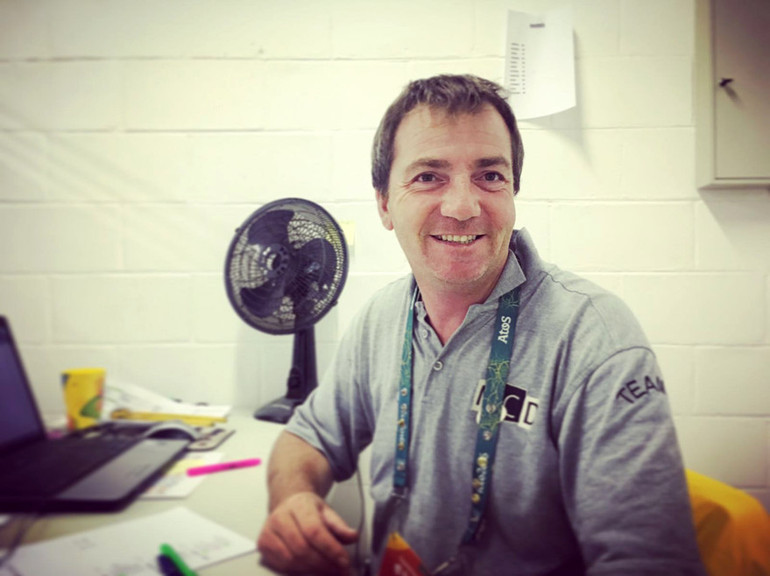Ever wondered what it takes to build a showjumping venue? WoSJ asked Patrick Borg, the Frenchman who has 22 years of experience as a stable manager at shows all over the world – his latest work being the Olympic Games in Rio de Janeiro.
"At first I did a few shows a year, and helped friends with the organization of the stable areas at a few shows," Patrick tells about the beginning of his career. "The last six years I have done this professionally and today our company has 350 transportable stables, three special tractors and four trucks. We have about 24 freelancers to help at different events. This year we do 52 events."
Some might think that in the equestrian world the grooms and the horses are the ones who are on the road the most, but talking to Patrick it seems he wins this one; "When the first horses arrive, most of my work is already done. I am away from home a lot – the shows go on during the weekends, but the planning and building takes the whole week." For the Olympic Games in Rio, Patrick was away for nearly a month. "I call my family every day and we use FaceTime to make sure my kids don't forget my face," Patrick laughs.
Patrick is usually one of the first people that the grooms meet when arriving at a show. "When the horses arrive everything has to be ready and run smoothly. If the grooms think that everything looks ok as they arrive, I have done my job well," Patrick tells about his work which starts days before anyone arrives at a venue. "First I go to the venue and check the facilities and what is needed. We make a plan for the stables and a budget, and discuss this with the organizers of the show to find solutions that make everyone happy. Many shows don't have enormous budgets, so we need to find solutions where we get the stable area done as good and safe as we can with acceptable costs. Some venues are more difficult to organize than others; sometimes we are in a city center, sometimes in a park. But in my planning the horses always come first. If I have a customer who understands the needs of the horses, it is easier for me to do my job."
Patrick and his team plan the set up of the stables, fix the boxes, bedding, water outlets and washing places - practically they are building a whole new stable complex every week. "What I enjoy the most is all the preparations; seeing the empty venue and then building up everything. When a venue is not really made for horses, it takes more work, but I like the variety. I can't name a favorite location, because I think it is fun to have such varying places to work at."
Patrick does some of the Global Champions Tour shows, the Longines Masters and as his latest job the Olympic Games in Rio de Janeiro. "As I was in Rio, we had two other events running at the same time. For us, we don't have small and big clients; all clients are equally important. It doesn't matter if we do a one star or a five start show, the horses always come first and they need the same treatment no matter what level they are competing at," Patrick tells about the priority in his work. "I believe that a good show is a place where the horses and the grooms are happy; and that their happiness means the riders will return to the show."
Text and photo (c) World of Showjumping.









